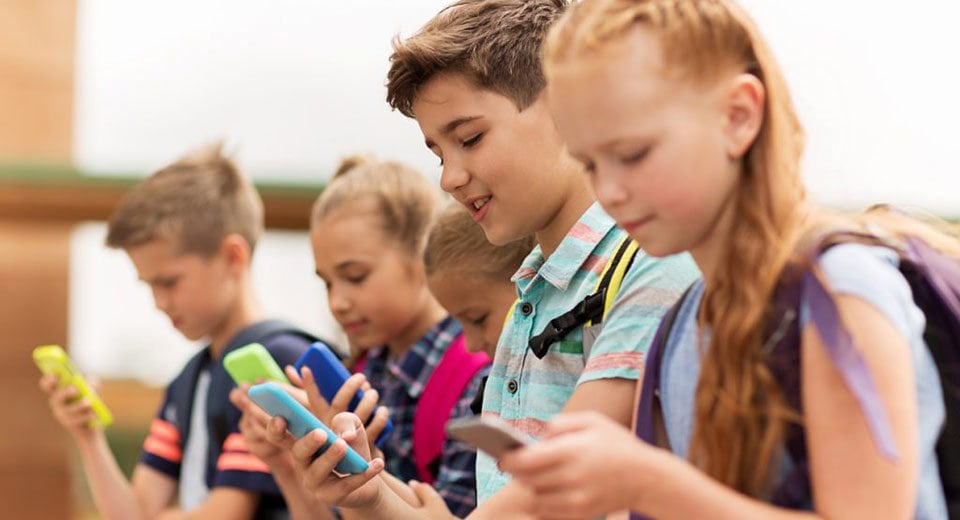Is your child addicted to their cell phone? Are you?
Technology and the internet are part of everyday life for most adults, and that is also increasingly true for teenagers and children. But is it actually good for young people to be so plugged in? More researchers, educators and parents are starting to sound an alarm.
In the most recent data available, a 2015 Pew Research study found that 92 percent of teens between the ages of 13 and 17 reported going online daily, usually from a mobile device. Of the kids surveyed, 24 percent reported using the internet “almost constantly.” Another 56 percent go online several times a day and 12 percent reported once-a-day use.
“I think the appropriate use of a cell phone is as a tool,” said psychiatrist Bart Main, MD at the Centers for Behavioral Health of Cape Cod Healthcare, who specializes in the treatment of adolescents. “There are good uses, but if a kid throws a fit when you try to take the cell phone away, that’s when you know it’s a problem. He or she has lost perspective and the cell phone needs to be removed. It’s just like any other addiction. Obviously, the ‘addiction’ is not to the degree that alcohol or drugs are, but it can cause harm.”
Even though cell phone addiction isn’t a clinical diagnosis yet, a study by Common Sense Media showed that 50 percent of the teenagers they polled actually did feel addicted to their phones and 58 percent of their parents were worried their kids were attached to their devices in an unhealthy way.
It’s not an idle worry. Too much time on a cell phone or tablet can stunt kid’s emotional, verbal and social growth, because time spent on a cell phone takes away from the important skills in those areas that they should be developing, according to Dr. Main. It can also result in lower grades at school and problems with attention.
“It makes people anxious when the cell phone dings,” he said. “They are being interrupted constantly. I have kids come into my office that look like they have ADHD, but it’s not ADHD. They are just being interrupted all the time.”
Part of the problem is that cell phones are not just phones, Dr. Main said. They are actually multi-use hand-held devices. They are a camera, a GPS, a way to watch movies or television, a calculator, a game system and a means to access social media.
He noted that if you see teenagers sitting in a group, they will often be texting each other rather than talking, even though it is a slower and less effective form of communication.
“Now that the technology includes voicemail, email and texting, virtual communication is rampant,” he said. “We are genetically programmed to be social animals. Social connection is vital to our health, and this is just another way of doing it.”
A desire for social connection is also why it’s almost impossible to ignore a text, Dr. Main said. It’s a reinforcing behavior because it changes the chemicals in our brain. When the cell phone dings, there is an oxytocin rush that makes us compelled to want to respond.
For parents who suspect their child is overly dependent on their device, Dr. Main recommends taking it away for a few days to let their nervous system settle down. Then reintroduce it gradually with time limits and rules in place.
“I have many kids who go through that cycle repeatedly,” Dr. Main said. “The parent has to pay attention to when it is back to being really compulsive. We all have to learn priorities. This is like dessert. You don’t start a meal with dessert. Life comes first.”
Dr. Main recommends parents follow these rules concerning hand-held devices:
- Don’t introduce a device at too young of an age.
- Set time limits on how long the child can use the device each day.
- Teach priorities like homework first.
- Always take the phone away at bedtime.
- If a child seems obsessed with the device, seek professional help for the problem.
Even people involved in the technology industry are raising red flags about the possibility that kids are becoming addicted to iPhones. Two large investors in Apple recently wrote a letter to the board of directors asking the company to develop new software tools that would help parents control and limit phone use more easily.
In the letter, the investors, California State Teacher’s Retirement System and the JANA Partners investment group, cite a study of more than 2,300 teachers that showed:
- 67 percent of the teachers surveyed thought that students were negatively distracted by digital technology in the classroom.
- 75 percent said that students’ ability to focus on educational tasks has decreased.
- 86 percent said the number of students with social challenges has increased.
- 90 percent said that the number of students with emotional challenges has increased.
They also cited new research published in January that indicates that teenagers who spend more time on electronic devices and less time doing non-screen activities like in-person socializing, sports or homework, tested lower for psychological well-being. The happiest teens were those who used digital media a little less than one hour a day.
